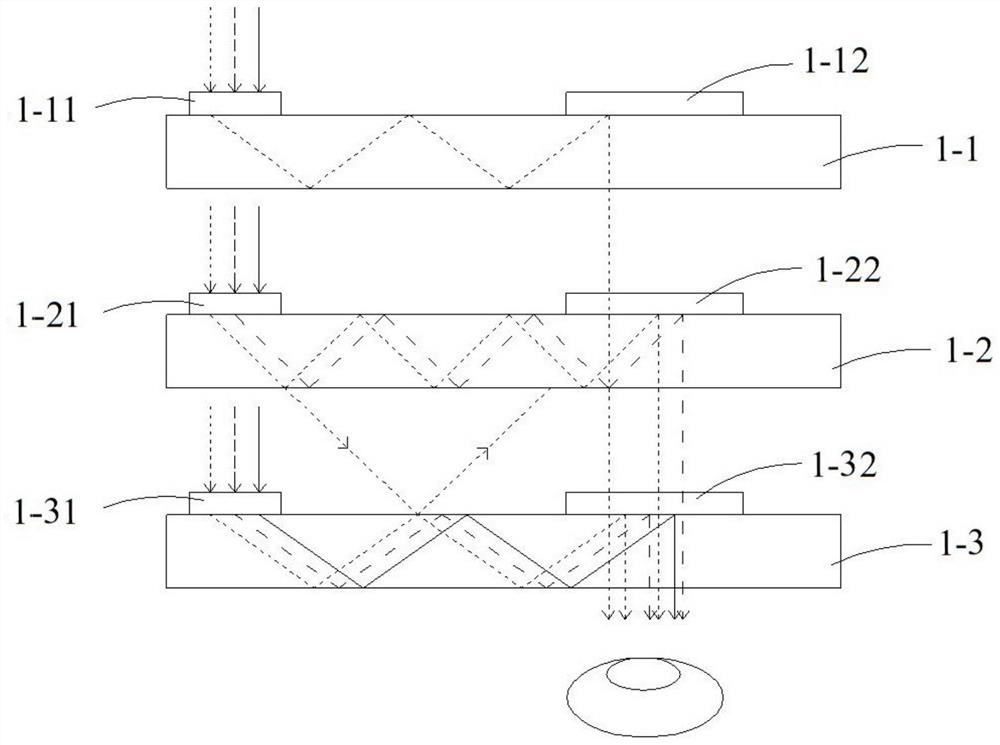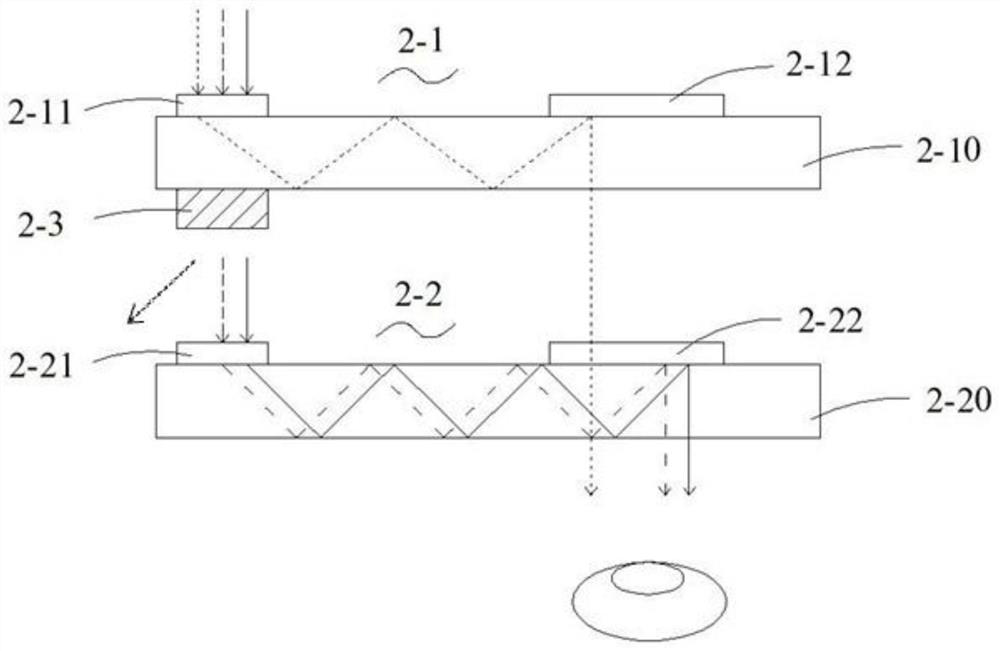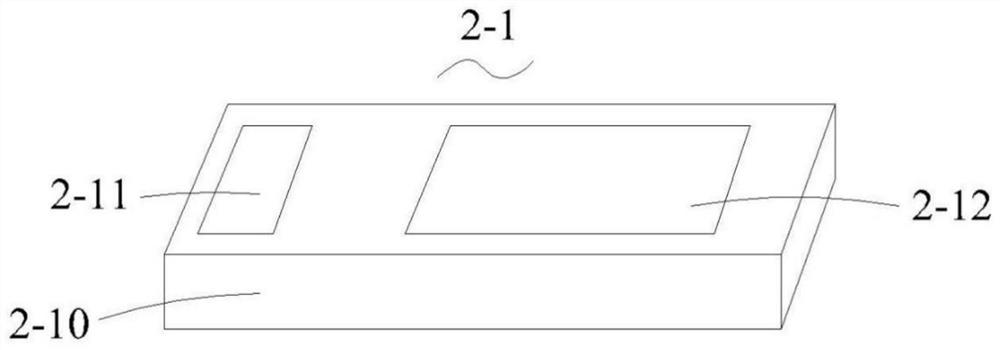Augmented reality display system
A display system and augmented reality technology, applied in the field of optics, can solve problems such as poor viewing experience, affecting imaging quality, uneven light matching, etc., to achieve the effect of avoiding light crosstalk, excellent filter characteristics, and improving experience comfort
- Summary
- Abstract
- Description
- Claims
- Application Information
AI Technical Summary
Problems solved by technology
Method used
Image
Examples
Embodiment 1
[0034] See figure 2 , image 3 with Figure 5 , the augmented reality display system shown in an embodiment of the present invention includes:
[0035] A laser light source (not shown) is used to provide incident image light. Of course, in other embodiments, it can also be other light sources such as LED, LCD or OLED. A first diffractive waveguide lens 2-1 and a second diffractive waveguide lens 2-2 are arranged at the irradiation place of the laser light source, and each diffractive waveguide lens includes a lens body and a functional area arranged on the lens body, specifically: the first The diffractive waveguide lens 2-1 includes a first lens body 2-10, a first coupling region 2-11 disposed on the first lens body 2-10, and a first coupling region 2-10 disposed on the first lens body 2-10. out of the region 2-12; the second diffractive waveguide lens 2-2 includes a second lens body 2-20, a second coupling region 2-21 disposed on the second lens body 2-20, and a second l...
Embodiment 2
[0040] See Image 6 , in this embodiment, other structures of the augmented reality display system of the present invention are the same as those in Embodiment 1, except that the diffractive optical structure set on the filter layer in this embodiment is a blazed grating, specifically, the incident When light is incident on a blazed grating at an angle α, the diffracted light exits at an angle β. By designing the groove spacing and blaze angle of the blazed grating, the blazed grating can achieve the maximum diffraction efficiency at a specific diffraction order for a specific wavelength, while achieving the lowest diffraction efficiency at other orders, especially the zero order. The optical filter layer of the present invention adopts the blazed grating design, which can achieve the maximum diffraction efficiency diffraction for light of a specific wavelength, while the rest of the wavelength bands are not affected and do not participate in the diffraction, and continue to b...
Embodiment 3
[0042] See Figure 7 with Figure 8 , in this embodiment, other structures of the augmented reality display system of the present invention are the same as those in Embodiment 1, except that the diffractive optical structure provided on the filter layer in this embodiment is a diffractive optical element. Specifically, Diffractive optical elements are also called binary optical elements, according to the general calculation formula of the diffraction efficiency of binary optical elements:
[0043]
[0044] Among them, N is the step number of the binary optical element, and m is the diffraction order. In ordinary diffraction gratings, the zero-order diffraction efficiency occupies a large energy ratio. By controlling the depth and size of the structure, the binary optical element can make the diffraction efficiency of the diffracted light under the incident condition of a specific wavelength be 0 when m=0, that is, the diffraction order is zero, that is to say, the zero-or...
PUM
 Login to View More
Login to View More Abstract
Description
Claims
Application Information
 Login to View More
Login to View More - R&D
- Intellectual Property
- Life Sciences
- Materials
- Tech Scout
- Unparalleled Data Quality
- Higher Quality Content
- 60% Fewer Hallucinations
Browse by: Latest US Patents, China's latest patents, Technical Efficacy Thesaurus, Application Domain, Technology Topic, Popular Technical Reports.
© 2025 PatSnap. All rights reserved.Legal|Privacy policy|Modern Slavery Act Transparency Statement|Sitemap|About US| Contact US: help@patsnap.com



